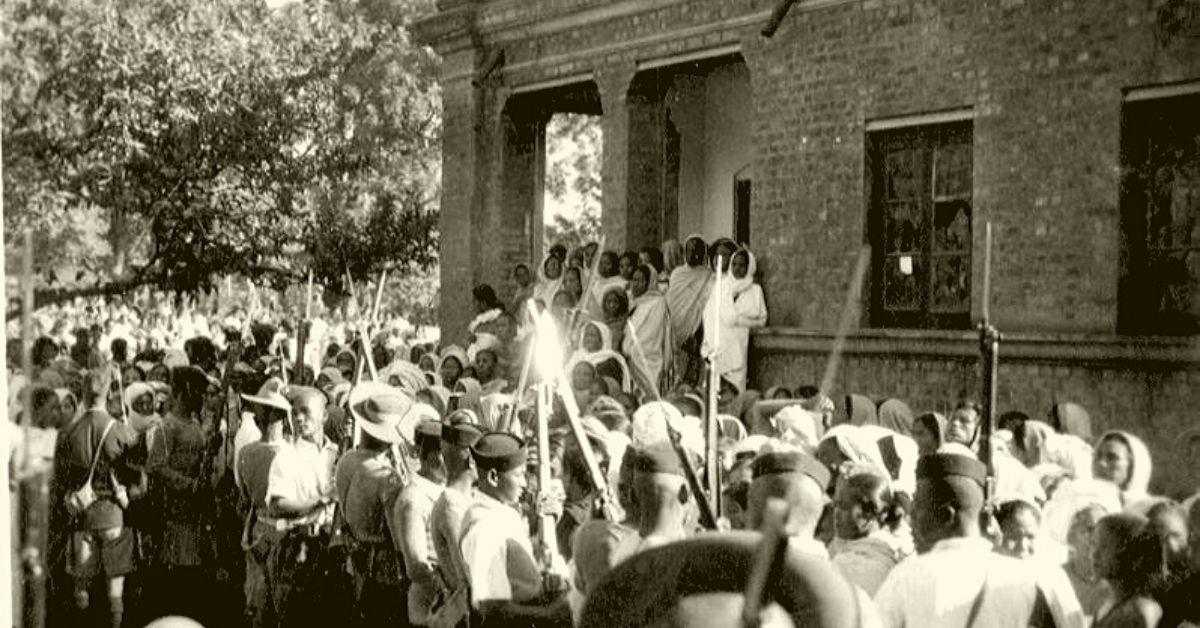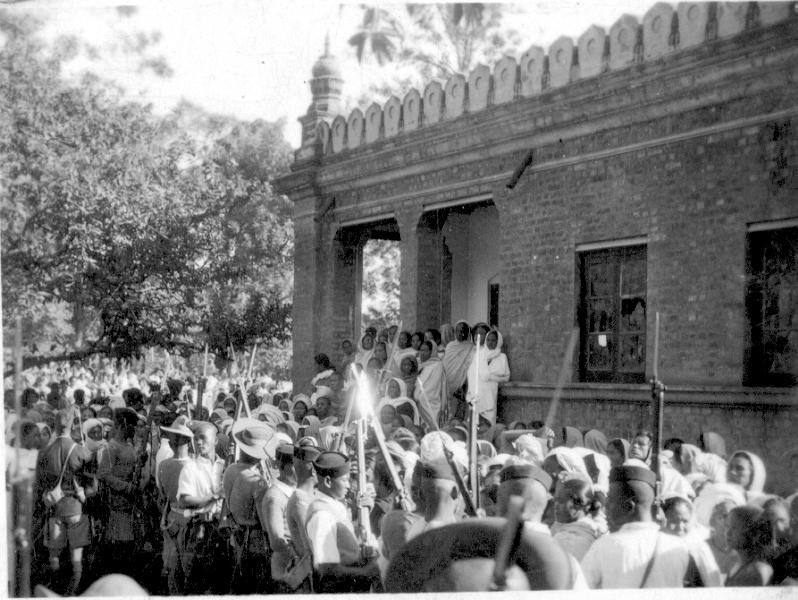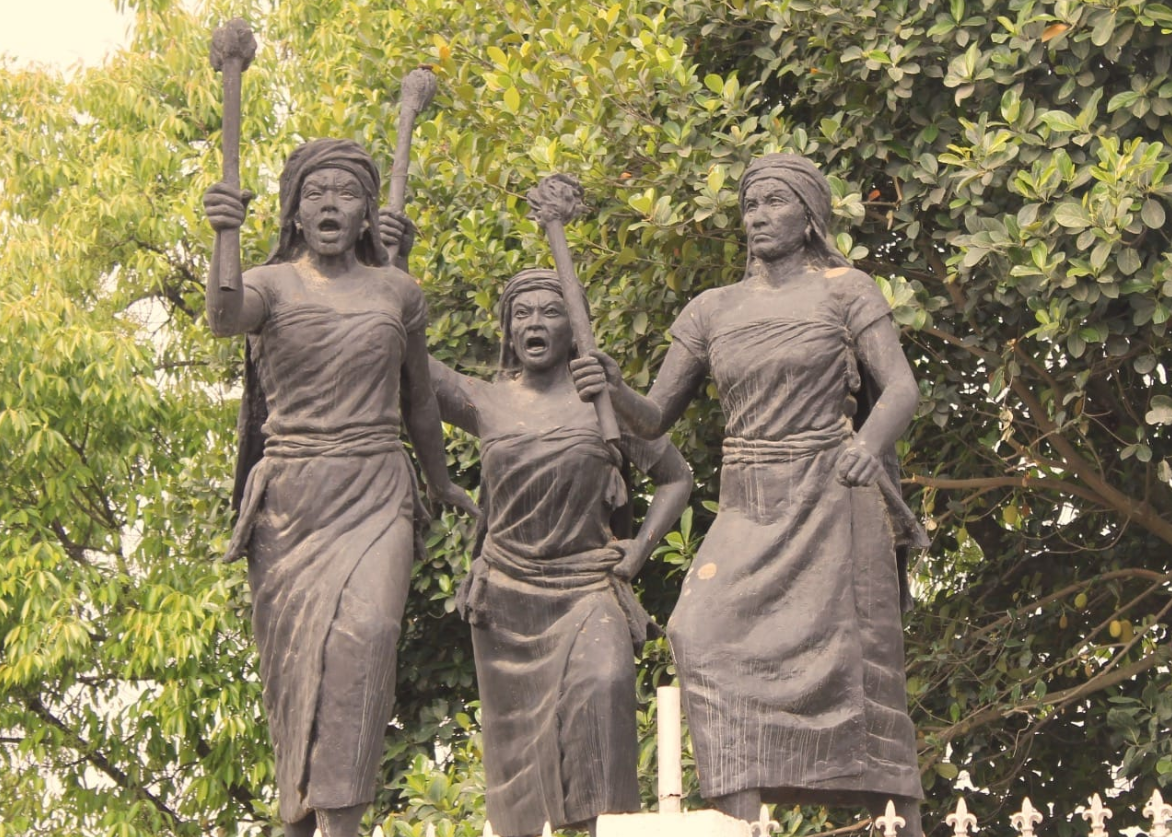When Their Men Demurred, Here’s How 1000’s of Manipuri Women Battled the British
Historians argue that the Nupi Lan movements not only sowed the seeds of economic and political reform, but also inspired generations of Manipuri women to assert their rights as equal citizens.

From the martyrdom of Haipou Jadonang, the Rongmei Naga leader who built an army of 500 to take on the British in the early 20th century to Rani Gaidinliu, who called upon ethnic Naga tribes to challenge the colonial administration at the age of 13, the contributions of the Northeastern states in the popular discourse surrounding India’s freedom struggle, has been largely forgotten.
While these were rebellions centred around influential personalities, the Nupi Lan (Women’s War) movements of the early 20th century were movements led by masses of women without a discernible central personality.
The first Nupi Lan movement broke out in 1904 in response to the reintroduction of the Lallup System, wherein local men were obligated to offer free labour for 10 days after every 30 days.
The second one began in 1939 against the indiscriminate export of rice from the state resulting in a famine-like situation.
Historians argue that these movements not only sowed the seeds of economic and political reform but also inspired generations of women to assert their rights as equal citizens from the Meria Paibi movement in the 1970s against alcoholism and drug abuse to the anti-AFSPA movement in 2004.
In many ways, these movements shaped Manipur’s future.
What’s particularly unique about these movements was where these agitations took place—the Ima Keithal or ‘Mother’s Market’—established in the late 16th century, which is today believed to be the largest all-women market in Asia, and possibly the world.
The First Nupi Lan
As stated earlier, the catalyst behind the first Nupi Lan movement was the reintroduction of the Lallup System by Colonel John Maxwell, the first British political agent appointed after the Anglo-Manipuri War of 1891.
Following the war, the British took direct control of Manipur till 1907 when they handed it to Raja Churachand Singh, whose administration was overseen by a political agent appointed by the British.
Colonel Maxwell had temporarily reintroduced the Lallup System following the burning down of two bungalows owned by British officials in 1904, and he wanted the local men to rebuild these bungalows for free.
But the women of Manipur had other ideas as they rose in unison to protest against this system of forced labour.
In September 1904, thousands of them came together and marched towards the Colonel’s official residence, and seeing them; the administration promised to reconsider their decision, which they did not. Unhappy with their inaction, nearly 5,000 women gathered at Ima Keithel in protest and refused to move out of there till the order was retracted.
“The violent agitations and demonstrations led by the market women had to be dispersed by the use of force, but ultimately the British had to build the houses at their own expense,” wrote Sanamani Yambem in the Economic and Political Weekly.
In other words, the women could accomplish what their men couldn’t, but this was not going to be the last time they raised their voice. Once again in 1925, when the administration raised the tax on water supply, it was the tradeswoman of Ima Keithel who stood up and demonstrated against this order. They never took things lying down.

The Second Nupi Lan
The Manipur valley has long witnessed the cultivation and export of rice even before the war in 1891. Following the war, however, the volume of rice exported from the valley increased exponentially irrespective of how much was produced and what the residents needed to survive.
This sudden spurt in exports was driven by the transport of rice on motorised vehicles instead of bullock carts. This unfair system of trade suffocated the valley’s residents.
Moreover, like what they did in the rest of India, the British practised their time tested economic method of swamping the local economy with cheaper imported goods which eventually destroyed the local cottage industry.
Meanwhile, Marwari traders brought in by the British had settled down in the region, taking over large segments of the rice trade by buying out a lot of land for paddy cultivation and setting up massive rice mills.
“[The] Second Nupi Lan of 1939 was a movement against the export of rice amidst acute scarcity in Manipur. Analysing the antecedents and the activities of Nupi Lan one may conclude that it was more of expression of economic grievances. Technology also served as [a] hindrance towards livelihood. The mills used to thrash the paddy deprived the women of Manipur of their earnings from husking paddy. The movement was not viewed as a class conflict between the Marwari rice traders and the people of Manipur who were poor and dependent on lands. It is interpreted as a freedom movement,” says this academic document on the history of social movements in Manipur.
Combine all these factors, and it only needed one season of either excessive rain or drought to push the residents to the wall.
And that’s exactly what happened in 1939 when excessive rains from July-August and November wreaked havoc on local paddy production.
In desperation, the farmers reached out to Raja Churachand’s durbar seeking a ban on export so that residents could at least survive on the rice they produced. Although the king’s durbar had initially agreed, the decision was soon overturned with pressure from the British and local exporters. This shortage of rice devastated the poorer Manipuris very hard and resulted in a near famine-like situation.
Angry at the status quo, on December 12 hundreds of women took to the streets of Imphal demanding a ban on rice exports and sealing of rice mills. They marched to the durbar office, but the Maharaja wasn’t present since he was out of station.
Desperate to enforce a ban on exports, the women physically dragged the president of the Manipur state durbar, TA Sharpe, took him to the local telegraph office and made him send an urgent telegram to the travelling Maharaja. Till a response came, Sharpe and other durbar officials were held captive at the telegraph office by the women whose numbers had swelled to nearly 4,000.

Eventually, a team of Assam Rifles soldiers came and brutally dispersed the women. In response to the beat down suffered by these women, the Ima Keithel was shut down for nearly a year. Upon hearing the news of this episode, the Maharaja too sought the stoppage of rice exports on the very next day. Meanwhile, traders who attempted to export again or engage in milling were met with protesting women.
“The Nupi Lan, which started as an agitation by Manipuri women against the economic policies of the Maharaja and the Marwari monopolists, later on, changed its character to become a movement for constitutional and administrative reform in Manipur,” adds Yamben.
Besides ignoring the contributions of the Northeast in our freedom struggle, the popular discourse surrounding it also ignores many of its women. In telling the brief story of movements like the Nupi Lan, one hopes that this changes.
Also Read: Manipur Girl Quits Singapore Job, Brews Up Herb Tea to Empower Local Ladies!
(Edited by Gayatri Mishra)
Like this story? Or have something to share? Write to us: [email protected], or connect with us on Facebook and Twitter.
If you found our stories insightful, informative, or even just enjoyable, we invite you to consider making a voluntary payment to support the work we do at The Better India. Your contribution helps us continue producing quality content that educates, inspires, and drives positive change.
Choose one of the payment options below for your contribution-
By paying for the stories you value, you directly contribute to sustaining our efforts focused on making a difference in the world. Together, let’s ensure that impactful stories continue to be told and shared, enriching lives and communities alike.
Thank you for your support. Here are some frequently asked questions you might find helpful to know why you are contributing?


This story made me
-
97
-
121
-
89
-
167













